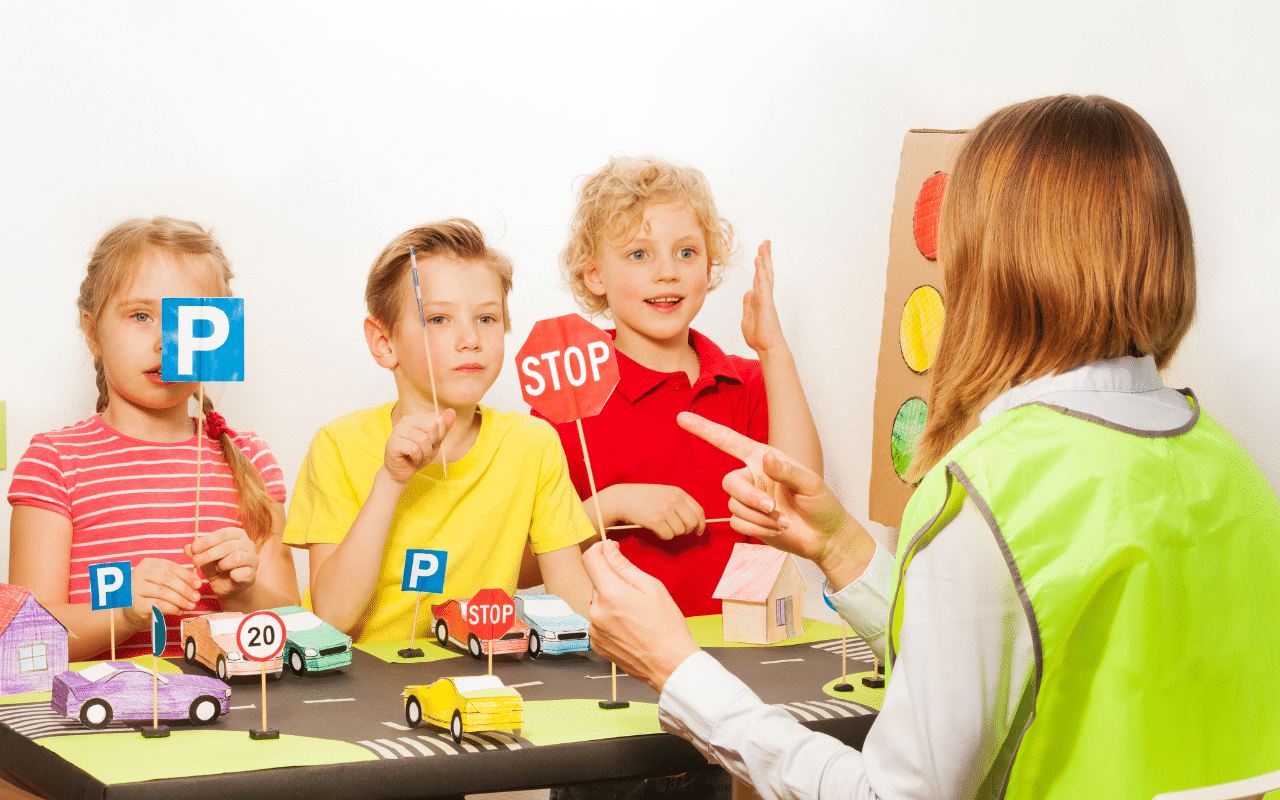Teaching road safety preschool activities to children under five is crucial to building awareness and establishing lifelong habits. These young minds are particularly impressionable, making early education in road safety both impactful and necessary. Through engaging activities and consistent messaging, preschoolers can begin understanding the importance of safe behaviours on roads.
How Can You Road Safety Preschool Activities Under 5 Years Old?

Promoting road safety to children under five requires a combination of play-based learning, repetition, and visual aids. Since preschoolers learn through exploration and observation, road safety activities must be hands-on and relatable.
- Storytelling and Role-Playing: Use simple stories and role-playing activities where children act as pedestrians, cyclists, or drivers. Encourage them to stop at pretend crosswalks and look both ways before crossing.
- Interactive Games: Use traffic-themed games to teach concepts like stopping at red lights or walking on sidewalks. For example, “Red Light, Green Light” teaches kids when to stop and go, mimicking real-world traffic rules.
- Visual Learning with Signs and Symbols: Use cut-out road signs and traffic lights to explain their meanings. Children can learn what each symbol represents, building awareness of road safety signs when they encounter them outside.
- Supervised Outdoor Activities: While walking, demonstrate safe practices like holding hands, using pedestrian crossings, and looking for signals. Constant supervision helps reinforce these lessons and ensures safety during activities.
What Are 3 Examples of Road Safety?

- Crossing at the Pedestrian Crossing: Teach children the importance of using designated pedestrian crossings. Explain the role of zebra crossings and the need for vehicles to stop before crossing the road.
- Wearing a Helmet While Biking: Demonstrating helmet safety is crucial. Helmets protect young children when they ride bikes or scooters, helping them understand that safety gear is part of responsible play.
- Stopping at Traffic Lights: Children should learn to recognise traffic lights and understand their significance. Children will become familiar with this critical safety rule by practising stopping at red lights during games or outdoor activities.
What Are the Five Road Safety Rules?
- Stop, Look, Listen, and Think: This fundamental safety rule helps children pause, assess, and ensure no danger is approaching before crossing the road. Please encourage them to look in both directions and listen for vehicles.
- Use Crosswalks and Pedestrian Signals: Always cross the street at marked or pedestrian signals. This habit ensures that children are crossing in safe areas where drivers are more likely to stop.
- Hold an Adult’s Hand: Young children should be taught to always hold an adult’s hand while walking near or crossing roads. This practice gives them added security and keeps them safe in traffic-heavy areas.
- Wear Bright or Reflective Clothing: This rule is essential when children are outdoors, especially during low-light conditions. Bright or reflective clothing makes children more visible to drivers.
- Wait for the Green Man: When crossing at a traffic signal, teach children to wait for the “green man” signal before stepping onto the road. This reinforces the idea of following traffic rules and waiting for permission to cross safely.
How Do You Show Road Safety Preschool Activities?

Showing road safety to preschool children involves modelling good behaviour and incorporating safety habits into daily routines.
- Be a Role Model: Children learn by observing adults. Show them how to cross streets safely, use pedestrian signals, and follow traffic rules. By modelling these behaviours, you set a positive example.
- Create Safe Play Areas: Ensure that outdoor play areas are well-designed and free from traffic hazards. Set clear boundaries between play areas and roads, teaching children where to explore and play is safe.
- Road Safety Songs and Rhymes: Using songs or rhymes related to road safety helps children remember essential concepts. For example, a rhyme, “Stop, look, and listen before you cross the street”, can help reinforce this habit.
- Encourage Active Participation: During walks or outings, ask children to point out road signs, pedestrian crossings, or traffic lights. Involving them in these discussions makes them more aware of their surroundings and instils a sense of responsibility.
Teaching road safety to young children can significantly contribute to child safety improved at child care centres, as these lessons create safer environments and ensure children practice good habits both inside and outside their care environments.
Through storytelling, interactive games, and visual aids, preschoolers can grasp essential safety concepts in ways that resonate with their learning style, helping them stay safe for years to come.








